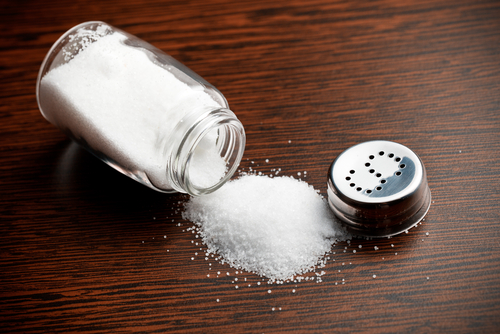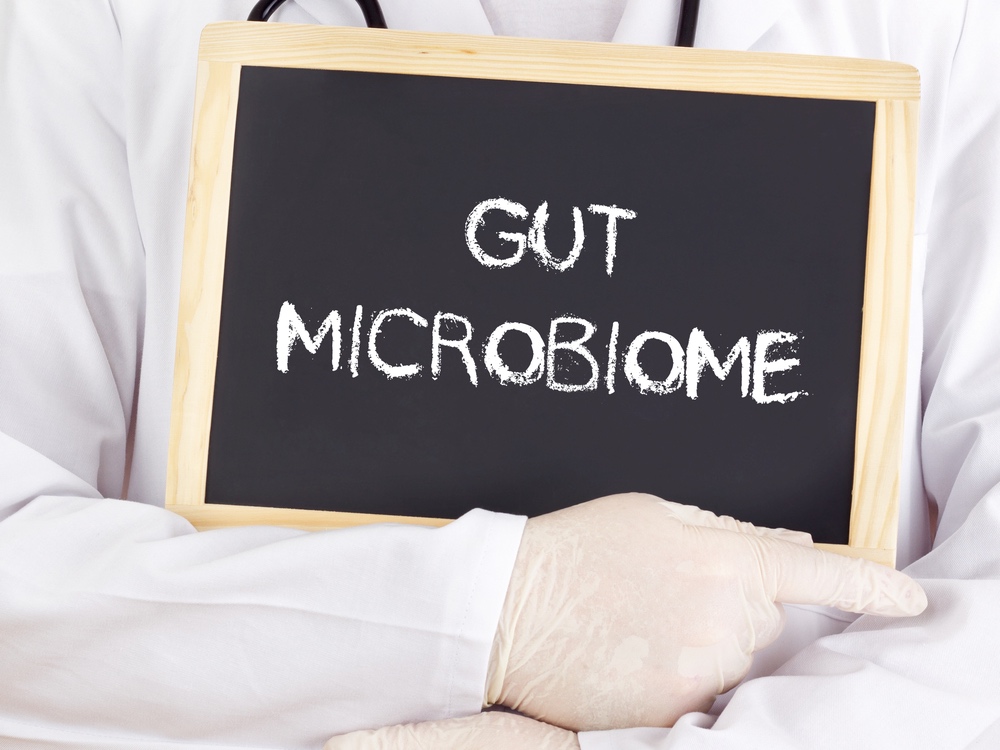eNews is a monthly e-newsletter shared with the global PEN Community and created to help dietitians position themselves as leaders in evidence-based nutrition practice. In addition, users of the PEN System will find articles on the new evidence, resources and features available and how to maximize one's use of PEN.
The PEN® team’s surprising findings of 2014
Each day, our Global PEN® team monitors the literature for evolving research and monitors for nutrition trends. What surprised us? As we approach the end of 2014, our PEN® global team has reflected and noted their 13 surprising findings from this past year. PEN® surprising finding: salt controversy by Jayne Thirsk RD, PhD, FDC, Director PEN: Practice-based Evidence in Nutrition
®
While I have been aware that there are differing views on the optimal amount of salt one should consume to promote health, the last year has seen renewed ferocity in what Marion Nestle has called the salt wars.
http://www.foodpolitics.com/tag/salt/
I ran head long into this “controversy” when assisting a dietitian with a review of some clinical practice guidelines, which, among other things, sought to recommend optimal sodium levels for patients with chronic kidney disease.
A systematic review of observational studies published this year suggested that there may be increased risk of mortality associated with both high and low sodium intakes (1).

I can’t say I am on the fence on this one - I still firmly believe that the evidence points to high sodium intakes (above 2300 mg/day) being associated with higher risk for cardiovascular disease. The IOM Committee, in their 2013 “assessment of the evidence” also concluded that there could be substantial population benefit and little risk of harm from reducing excessive intakes of sodium to the 2300 mg/day level (2). However, in light of new evidence, they also cautioned about recommending 1500 mg/d as a desirable sodium target for the general population.
I’d like to see more dialogue as well as more and better research around the lower end of sodium intakes. Is the association between low sodium intakes (<2300 mg/d) and increases in all cause mortality a real effect? Or are patients who consume very low amounts of sodium frailer, sicker and is it the frailty, lower total food intake, or co-morbidities that account for the observed increase in all cause mortality, rather than the low sodium intake?
The IOM goes further and suggests there needs to be improvements in how we measure sodium intakes in populations, as well as consideration of the intakes of other electrolytes (notably potassium). While we likely don’t know the optimal sodium intake for the general population or subgroups, once again, moderation appears to be our best option until more research is conducted.
References:
- Graudal N, Jürgens G, Baslund B, Alderman MH. Compared with usual sodium intake, low- and excessive-sodium diets are associated with increased mortality: a meta-analysis. Am J Hypertens. 2014 Sep;27(9):1129-37. doi: 10.1093/ajh/hpu028. Epub 2014 Mar 20. Abstract available from: http://www.ncbi.nlm.nih.gov/pubmed/24651634
- Committee on the Consequences of Sodium Reduction in Populations, Institute of Medicine. Sodium intake in populations: assessment of evidence. Washington, D.C.: The National Academies Press; 2013. Available from: http://www.iom.edu/Reports/2013/Sodium-Intake-in-Populations-assessment-of-Evidence.aspx
PEN® surprising finding: plant-based beveragesby Tanis Fenton RD, PhD, PEN
® Evidence Analyst, Dietitians of Canada

Plant-based beverages seem to be taking over more and more of the “dairy” case in supermarkets these days. This space take over likely reflects increasing sales of these beverages. A finding that surprised me this year was learning that there have been several case reports of severe malnutrition among infants and toddlers who have been fed these beverages as part of a regular diet. One of these infants, a 2.5-month-old, who was fed almond, nut, and soy beverages for 1.5 months actually died. A further surprise is the low nutrient levels in Rice Dream
®, especially in the Original Unenriched version, which is made from rice. Based on product label comparisons at my local grocery store, the protein level of this product is 0.4 grams per cup, compared to 8 g for cow’s milk.
Reference:
- Fourreau D, Peretti N, Hengy B, Gillet Y, Courtil-Teyssedre S, Hess L,et al. [Pediatric nutrition: severe deficiency complications by using vegetable beverages, four cases report]. Presse Med. 2013;42(2):e37-43. [French]. Abstract available from: http://www.ncbi.nlm.nih.gov/pubmed/23021957
PEN® surprising finding: Paleo diet benefits?by Tanis Fenton RD, PhD, PEN
® Evidence Analyst, Dietitians of Canada
I was surprised by the lack of consistency of the benefits from eating the Paleo diet. There have been three randomized trials of the Paleo diet, and the findings in each study were not replicated in the others with the exception of only a few things (1-3).
The Paleo diet consistently reduced serum triglycerides (2,3), compared to a diet for diabetics
(evenly distributed meals, increased intake of vegetables, root vegetables, dietary fiber, whole-grain products, fruits and berries, and decreased intake of total fat with more unsaturated fat, while incorporating concepts of glycemic index and varied meals through meal planning by the Plate Model) and a low fat high fibre diet (daily intake of 15% of energy intake from protein, 25–30% from fat and 55–60% carbohydrates, with emphasis on low- fat dairy products and high-fibre products).
However, triglycerides can be reduced when obese people follow high protein diets that include grains and dairy as was seen in another randomized trial (4). The outcomes of LDL cholesterol, systolic blood pressure, or fasting insulin were not improved on the Paleo diet relative to the comparison diets (1-3).
The Paleo diet is promoted mostly for weight loss but proponents also claim that for maximum health, we should eat what humans ate during our early evolution.
In short-term studies, compared to a Mediterranean-like diet, there was no significant differences in weight loss at six and 12 weeks among obese men with ischemic heart disease randomized to the two diets (1). Compared to a diet for diabetics, the researchers reported a significantly greater weight loss of three kilograms after three months on the Paleo diet (2). In a longer term randomized study, obese participants following the the Paleo diet, compared to a diet based on the Nordic Nutrition Recommendations (high fibre, low fat), had a higher weight loss at six months; however, there was no significant difference in weight loss between the groups at two years (3).
I also learned that little is known about what actual foods were eaten by ancient peoples, what they ate varied by their location, and there is evidence that some ate grains and legumes. Further, humans have evolved since the advent of agriculture, as some populations have evolved to digest lactose. Thus, the premises of the Paleo diet are actually in error. For more information, login to PEN to see our
Popular Paleo Diet Evidence Clip.
References:
- Lindeberg S, Jönsson T, Granfeldt Y, Borgstrand E, Soffman J, Sjöström K, et al. A Palaeolithic diet improves glucose tolerance more than a Mediterranean-like diet in individuals with ischaemic heart disease. Diabetologia. 2007;50(9):1795-807. Abstract available from: http://www.ncbi.nlm.nih.gov/pubmed/17583796
- Jönsson T, Granfeldt Y, Ahrén B, Branell UC, Pålsson G, Hansson A, et al. Beneficial effects of a Paleolithic diet on cardiovascular risk factors in type 2 diabetes: a randomized cross-over pilot study. Cardiovasc Diabetol. 2009 Jul 16;8:35. doi: 10.1186/1475-2840-8-35. Abstract available from: http://www.ncbi.nlm.nih.gov/pubmed/19604407
- Mellberg C, Sandberg S, Ryberg M, Eriksson M, Brage S, Larsson C et al. Long-term effects of a Palaeolithic-type diet in obese postmenopausal women: a 2-year randomized trial. Eur J Clin Nutr. 2014;68(3):350-7. Abstract available from: http://www.ncbi.nlm.nih.gov/pubmed/24473459
- Noakes M, Keogh JB, Foster PR, Clifton PM. Effect of an energy-restricted, high-protein, low-fat diet relative to a conventional high-carbohydrate, low-fat diet on weight loss, body composition, nutritional status, and markers of cardiovascular health in obese women. Am J Clin Nutr. 2005;81:1298-306. Abstract available from http://www.ncbi.nlm.nih.gov/pubmed/15941879
PEN® surprising finding: food insecurityBy Jane Bellman M.Ed, RD PEN
® Resource Manager, Dietitians of Canada
The HungerCount results for 2014 (1) show that not only is food bank use increasing (+24.5% change since the Canadian economic recession in 2008), but what I found most surprising in the data this year is that 62% of food insecure households earn the majority of their income from employment. Food insecurity affects many people but I hadn't realized how many are actually employed. These HungerCount statistics, which are a national (Canada) survey of emergency food programs in Canada, support the need for a living wage so people can live in dignity.
From Katharine Schmidt, Executive Director of Food Banks Canada, "the unfortunate combination of low-paying jobs, inadequate supports for the unemployed, and a lack of training opportunities for Canadians is keeping food bank use near record levels." (1). So essential community supports, food banks and the community programs they support, need to continue until the root causes of hunger are addressed for lasting change.
Looking globally, the State of Food Insecurity in the World 2014 report indicates that about 805 million people are undernourished with 63 developing countries reaching the hunger target of the Millennium Development Goal #1 (of halving the proportion of undernourished people in developing countries by 2015) (2). However while global hunger reduction declines, severe food insecurity exists, especially in areas affected by conflict and natural disasters such as sub-Saharan Africa and Western Asia.
References:
- Food Banks Canada. HungerCount 2014. Toronto: Food Banks Canada; 2014. Available from: http://www.foodbankscanada.ca/getmedia/7739cdff-72d5-4cee-85e9-54d456669564/HungerCount_2014_EN.pdf.aspx?ext=.pdf
- FAO, IFAD, WFP. The state of food insecurity in the world 2014. Strengthening the enabling environment for food security and nutrition. FAO: Rome; 2014. Available from: http://www.fao.org/3/a-i4030e.pdf
PEN® surprising finding: critical careBy Dawna Royall, MSc, RD, PEN
® Evidence Analyst, Dietitians of Canada

What is the role of immunonutrition in critically ill patients? Studies have shown inconsistent effects of supplemental immune-enhancing nutrients (e.g. arginine, glutamine) on infectious complications in critically ill adults. [See
related questions in the Critical Illness Knowledge Pathway]. However, I have been surprised about emerging studies showing
greater risks associated with immunonutrition in critical illness.
Notably, the MetaPlus study examined the effect of high protein enteral nutrition supplemented with immune-modulating nutrients (fish oil, antioxidant nutrients (vitamin C, E and selenium) and glutamine) compared with a standard high protein enteral nutrition in about 300 mechanically ventilated critically ill adults (1). No differences in rates of infection were observed between groups, but alarmingly there was a suggestion that immunonutrition was associated with greater mortality. This study augments other recent multicentre trials using higher doses of various immune-modulating nutrients, which show that ‘less may be better’ in critical illness.
Reference:
- van Zanten AR, Sztark F, Kaisers UX, Zielmann S, Felbinger TW, Sablotzki AR, et al. High-protein enteral nutrition enriched with immune-modulating nutrients vs standard high-protein enteral nutrition and nosocomial infections in the ICU: a randomized clinical trial. JAMA. 2014 Aug 6;312(5):514-24. doi: 10.1001/jama.2014.7698. Abstract available from: http://www.ncbi.nlm.nih.gov/pubmed/25096691
PEN® surprising finding: recommendations with limited evidenceBy Kristy Bartlett APD, Professional Services Dietitian, Dietitians Association of Australia
I have been surprised this year at the controversy surrounding nutrition recommendations that have limited supporting evidence (although I probably shouldn’t be!). I have observed with interest the recommendations from people outside of the nutrition and dietetics profession for the ‘Paleo Way’ of eating, low carb and high fat diets, and the claim that saturated fat has no impact on cholesterol levels. It certainly has been a challenging year for evidence in nutrition. This has really reminded me how powerful anecdotal evidence is, particularly from someone/a group who is recognized by the public as a trustworthy source of information. Although these issues have placed a great deal of pressure on our profession, I think it has been a great reminder of how careful we need to be as dietitians to make sure that we analyze evidence critically and communicate it in a clear and helpful way to members of the public. Of course, this is not easy.
Dietitians can be confident in the high quality evidence PEN
® provides to strengthen an argument. As the profile of PEN grows hopefully dietitians will be able to use this in our favour to convince the ever curious public that we are the experts in food and nutrition and hold their health in our best interest. Exciting times ahead!
PEN® surprising finding: misrepresented “scientific” findingsBy Heather Alaverdy MA, RD, PEN
® Editor, Dietitians of Canada

My surprising finding is actually my own observation (albeit one that I expect is shared by others) that the increasing emphasis on evidence-based practice seems to be in parallel with the emphasis on misrepresented "scientific" findings. Evidence-based practice is clearly supported across many disciplines and organizations on all levels. Yet, there also seems to be an increasing number of headlines and dialogue about nutrition-related findings that are a result of limited and/or misinterpreted evidence.
In the past year, there has certainly been stellar evidence, including systematic reviews of well-designed randomized control trials, which has changed and/or reaffirmed practice. However, there has also been attention given to evidence from poorly designed research and/or analysis; including inappropriately extrapolating results from one population to another and making strong statements based on few numbers. In addition, the misuse of observational data continues to be a frequent culprit in the misinterpretation of evidence. Observational studies can certainly provide rich and important data, but the evidence can never be assumed to be cause and effect.
One of the PEN
® knowledge database's greatest strengths is that it is Internet-based and thus is accessible to many people around the world. However, our expanding PEN
® Global Team must always compete with the accessibility of nutrition-related evidence that is not credible, but receives widespread attention. Thankfully, we have many dietitians, health providers and researchers who join us in this battle. As Shakespeare noted: the “truth will out!"
PEN® surprising finding: emerging research on the gut microbiomeBy Heather Petrie, MSc, RD, PEN
® Evidence Analyst, Dietitians of Canada
A surprising finding from 2014? I find little surprises me nowadays in the field of nutrition research. However, I can say that something that has certainly caught my interest this past year is research emerging on the role the gut microbiome may have in eliciting seemingly paradoxical effects. For example, the 2014 study that reported finding artificial sweeteners (mostly saccharin was studied) to alter the gut microbiome in mice and in a very small sample of humans, and to also negatively affect glucose tolerance received much press (1). Click
here to read our article analysis.

For artificial sweeteners to impact glycemic responses is generally unexpected due to the non-caloric nature of artificial sweeteners. However, what is particularly fascinating to me about this research is the potential causal connection of the impaired glycemic response with changes in the microbiome; as observed from not seeing an impact on glucose tolerance when the mice had their gut microbiome eliminated with antibiotics and the elicitation of glucose intolerance when feces were transplanted from saccharin-fed mice to mice with sterile intestinal tracts.
Additionally, last year there were some interesting articles published on gut microbiota metabolism of L-carnitine to trimethylamine-N-oxide (TMAO) and its relationship to atherosclerosis and cardiovascular risk (2,3); while at the same time supplementation with L-carnitine for secondary prevention of cardiovascular disease has been studied (4). So, do these compounds help? Harm? Have no effect? Are their effects ameliorated by the gut microbiome? Do some humans respond differently to these compounds? And, in the case of L-carnitine, are the effects different if from food or supplement? So much left to investigate….
References:
- Suez J, Korem T, Zeevi D, Zilberman-Schapira G, Thaiss CA, Maza O, et al. Artificial sweeteners induce glucose intolerance by altering the gut microbiota. Nature. 2014 Oct 9;514(7521):181-6. doi: 10.1038/nature13793. Epub 2014 Sep 17. Abstract available from: http://www.ncbi.nlm.nih.gov/pubmed/25231862
- Koeth RA, Wang Z, Levison BS, Buffa JA, Org E, Sheehy BT, et al. Intestinal microbiota metabolism of L-carnitine, a nutrient in red meat, promotes atherosclerosis. Nat Med. 2013 May;19(5):576-85. doi: 10.1038/nm.3145. Epub 2013 Apr 7. Abstract available from: http://www.ncbi.nlm.nih.gov/pubmed/23563705
- Ussher JR, Lopaschuk GD, Arduini A. Gut microbiota metabolism of L-carnitine and cardiovascular risk. Atherosclerosis. 2013 Dec;231(2):456-61. doi: 10.1016/j.atherosclerosis.2013.10.013. Epub 2013 Oct 24. Abstract available from: http://www.ncbi.nlm.nih.gov/pubmed/24267266
- Shang R, Sun Z, Li H. Effective dosing of L-carnitine in the secondary prevention of cardiovascular disease: a systematic review and meta-analysis. BMC Cardiovasc Disord. 2014 Jul 21;14:88. doi: 10.1186/1471-2261-14-88. Abstract available from: http://www.ncbi.nlm.nih.gov/pubmed/25044037
PEN® surprising finding: depth of controversy around vitamin DBy Kerri Staden BSc, RD, PEN
® Resource Manager, Dietitians of Canada
My surprising finding this year was the depth of the controversy surrounding vitamin D recommendations, and the heated debate and passionately held views of a number of researchers, authoritative sources and organizations. Central to this controversy, there is no agreement regarding what is the optimal plasma concentration of vitamin D. Therefore, there is disagreement among experts as to whether populations are deficient in vitamin D or not and what the recommendations for intake should be. It is also still not understood if vitamin D is a precursor to disease or just a marker of ill health. Furthermore, the research about the health benefits of vitamin D and its relationship to various diseases is inconsistent. At last count there were six systematic reviews released in 2014 (and many before then), which have different conclusions; adding to, rather than resolving the confusion. For a more complete discussion of the issues and the bottom line for dietitians, watch for PEN
®’s upcoming Evidence Clip:
Vitamin D-lemmas. This vitamin, like so many before it, may not turn out to be the darling of the supplement world.
PEN® surprising finding: spurious relationship with cheeseBy Ingrid Darnley, BSc (Hons), Policy Office Clinical Quality, British Dietetic Association
As an avid cheese connoisseur, I was really surprised by the relationship between per capital consumption of cheese in the U.S. and the number of people who died by becoming tangled in their bed sheets! I learned of this correlation in an article published in
PEN eNews. I had never thought of spurious correlations in these terms and it helps to encourage people to consider the many other confounding factors that may influence the relationship between two variables.
PEN® surprising finding: estimated percentage of cancers caused by obesityBy Judy Lawrence RD, PhD, PEN
® Evidence Analyst, British Dietetic Association
During my short time as a PEN
® Evidence Analyst I have been surprised to learn that an estimated 20% of cancers are thought to be caused by obesity (1). I knew from my research with breast cancer survivors that obesity is particularly linked with postmenopausal breast cancer, but I was surprised to find that colorectal, oesophageal, gastric, pancreatic, endometrial, gall bladder, and prostate cancer are all associated with obesity (2). Abdominal fatness and its link with circulating oestrodiol levels drives the increased risk for endometrial and breast cancer. Insulin levels seem to link obesity and colorectal cancer and low grade inflammation links obesity with pancreatic and other GI cancer (2). The mechanism by which obesity influences the development of oesophageal cancer is still to be elucidated (3).
References:
- Wolin KY, Carson K, Colditz G a. Obesity and cancer. Oncologist [Internet]. 2010 Jan;15(6):556-65. Abstract available from: http://www.pubmedcentral.nih.gov/articlerender.fcgi?artid=3227989&tool=pmcentrez&rendertype=abstract
- Alemán JO, Eusebi LH, Ricciardiello L, Patidar K, Sanyal AJ, Holt PR. Mechanisms of obesity-induced gastrointestinal neoplasia. Gastroenterology. 2014 Feb;146(2):357-73. Abstract available from: http://www.ncbi.nlm.nih.gov/pubmed/24315827
- Long E, Beales ILP. The role of obesity in oesophageal cancer development. Therap Adv Gastroenterol. 2014 Nov;7(6):247-68. Abstract available from: http://www.pubmedcentral.nih.gov/articlerender.fcgi?artid=4212467&tool=pmcentrez&rendertype=abstract
PEN® surprising finding: “Old” GERD literatureBy Gail Scarlett MPH, APD, PEN
® Evidence Analyst, Dietitians Association of Australia
My surprise finding as I navigated the literature on gastroestophageal reflux disease (GERD) was the ‘old’ research and lack of evidence to support recommendations for lifestyle management of GERD symptoms. Clinical guidelines start with lifestyle management before moving on to drug and then surgical treatments. The American College of Gastroenterology guidelines, for example, still rely on older studies for weight loss management (1996, 1999, 2006); head of bed elevation (1996,1997); avoidance of late meals (1989,1998); cessation of tobacco and alcohol (1987, 1989, 1995); and avoidance of trigger foods (no evidence) (1).
Studies investigating chocolate as a trigger food, for example, (1975,1988) showed that the lower esophageal sphincter relaxed (and therefore might cause symptoms) after healthy subjects had a chocolate drink and, but there were no studies that looked at whether symptoms were improved significantly after stopping chocolate (2). Recommendations for lifestyle management are based on expert opinion rather than evidence. The best evidence for lifestyle change to improve GERD symptoms is for obesity. The dietitian’s role in GERD treatment is to contribute to weight loss management and to help individuals decide whether individual-specific trigger foods should be avoided in the context of maintaining good nutritional intake, rather than global elimination of ‘trigger foods’. Dietitians could also contribute to new research that updates evidence on lifestyle recommendations.
References:
- Katz PO, Gerson LB, Vela MF. Guidelines for the diagnosis and management of gastroesophageal reflux disease. J Gastroenterol. 2013 Mar;108(3):308-28; quiz 329. doi: 10.1038/ajg.2012.444. Epub 2013 Feb 19. Abstract available from: http://www.ncbi.nlm.nih.gov/pubmed/23419381
- Kaltenbach T1, Crockett S, Gerson LB. Are lifestyle measures effective in patients with gastroesophageal reflux disease? An evidence-based approach. Arch Intern Med. 2006 May 8;166(9):965-71. Abstract available from: http://www.ncbi.nlm.nih.gov/pubmed/16682569
PEN® surprising finding: infant feeding and celiac diseaseBy Beth Armour MEd, PDt, PEN
® Content Manager

In working with a dietetic student on developing upcoming content for the PEN
® knowledge database I was surprised to learn there has been some clarity in our understanding how the age of introducing gluten-containing foods to an infant can affect their risk of developing celiac disease (CD). The clarity is based on two new RCT’s. Based on previous research a number of countries have developed guidelines suggesting that gluten-containing foods should be introduced between four and six months, i.e. not before four months or not after seven months. To date, these guidelines have been controversial.
Two recent studies (1,2) come to the same conclusion that the timing of when an infant starts to consume gluten has only a minor role in the development of celiac disease. Based on these results, it is difficult to continue to recommend introduction of gluten between four to six months and while there are many health benefits of breastfeeding, it probably won’t prevent the development of CD. Future research needs to look at other ways to prevent celiac disease.
One of the studies included 553 infants, with a first-degree relative who had celiac disease, assigned to receive gluten-containing foods at either six months (Group A) or 12 months (Group B) (1). Those with a standard-risk HLA genotype or a high risk HLA genotype, as determined at 15 months, were included in the study. They were assessed for CD autoimmunity (tissue transglutaminase (tTG) autoantibody) at 15, 24 and 36 months and at five, eight and 10 years. They found that development of CD may be delayed but
not prevented by the introduction of gluten. If they had a positive serum result they underwent an intestinal biopsy to confirm CD. At 24 months Group A had a much higher incidence of CD (12% versus 5%) but once they reached five years of age it was no longer statistically significant (both groups had 16%). By 10 years of age those with a high-risk genotype were more likely to have CD than those with a low risk genotype. Breastfeeding, duration or if the infant was still breastfeeding when gluten was introduced, had no effect on the risk of developing CD. Those in Group B who developed CD did so later than those who developed CD in Group A, allowing them a longer period of health during critical development years.
The other study included 944 infants who had a first-degree relative with CD and a high risk genotype (HLA-DQ2 or HLA-DQ8) (2). Subjects were randomly assigned to either receive 100mg of gluten/day (n=475 or a placebo (n=496) from the ages of four months to six months. CD autoimmunity (tissue transglutaminase (tTG) autoantibody) was checked from time-to-time and all were followed up until at least three years of age. The cumulative incidence of CD at three years was 5.2%) but there was no difference in incidence between the two groups. Breastfeeding, duration or exclusive or not, had no affect on the risk of developing CD. This study continues to follow up the subjects to see long-term outcomes.
References:
- Lionetti E, Castellaneta S, Francavilla R, Pulvirenti A, Tonutti E, Amarri S, et. al. Introduction of gluten, HLA status and the risk of celiac disease in children. N Engl J Med. 2014;371(14):1295-303. Abstract available from: http://www.ncbi.nlm.nih.gov/pubmed/25271602
- Vriezinga SL, Auricchio R, Bravi E, Castillejo G, Chielewska A, Crespo EP, et al. Randomized feeding intervention in infants at high risk for celiac disease. N Engl J Med. 2014;317(14):1304-15. Abstract available from: http://www.ncbi.nlm.nih.gov/pubmed/25271603
Area to watch for 2015:
The PEN
® Global team is noticing a movement where health professionals and organizations are respectfully and professionally requesting transparency around the evidence supporting a claim made for an intervention, and around the details of studies reported in popular media:
Individually and collectively, these campaigns and resources seek to delve deeper to understand the congruency between claims and what the science has actually shown. We look forward to seeing what 2015 will show.
Compiled by Kristyn Hall RD, MSc, PEN eNews Editor and Social Media Lead